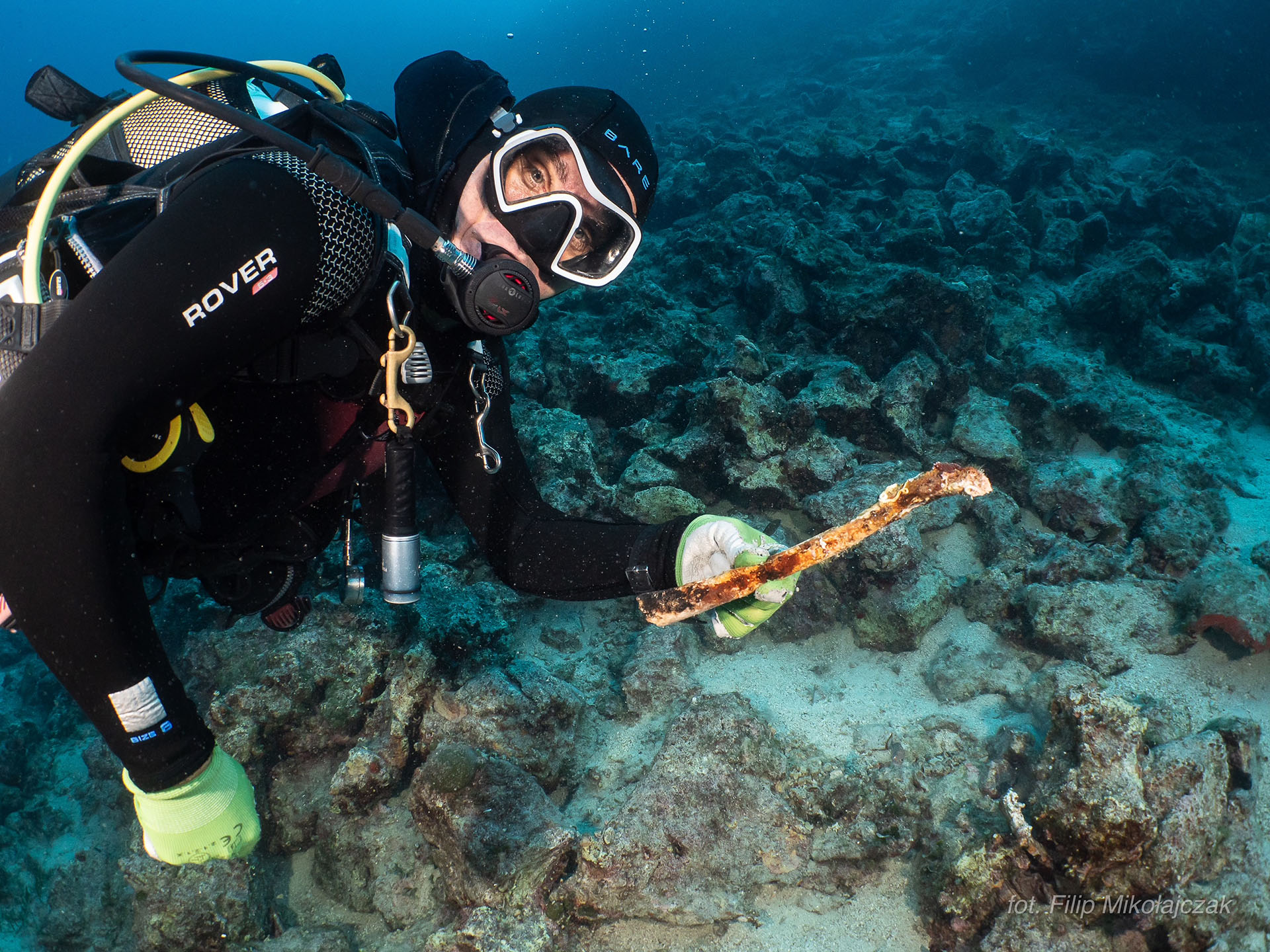For the past five summers I lived on the island of Vis in Croatia, where I worked as a recreational diving instructor and underwater guide. Every year, during my dives, I accidentally found some underwater artifacts from ancient times and every year I describe them here. In this article you will read about my underwater finds from 2024 and see them in photos. If you are interested in underwater archaeology, this is the article for you.
Greeks and Romans – the ancient city of Issa
The island of Vis has been inhabited for centuries, at least since the times of Ancient Greece. Back then it was known as Issa. Later it was also part of the Roman Empire. Therefore, to this day, remnants of both cultures can be found on and around the island. While on land most of the curiosities from those times have already been found and studied, what remains of the Ancient Greeks and Romans underwater is still largely undiscovered. That’s why underwater archaeologists work on the island every year conducting their research. And besides, various underwater treasures are sometimes discovered by chance by diving enthusiasts or people working at dive centers who guide recreational divers underwater.
Diving among antiquities – an adventure with underwater archaeology
Near the town of Vis on the island of Vis, there are three underwater archaeological sites open to exploration for recreational divers. These are the remains of the ancient harbour of Vis and ancient shipwrecks next to the islets of Host and Krava. And at all three sites I found something interesting this year. You can only dive there with registered dive centers, which make sure that visitors follow certain rules related to the protection of the underwater heritage and do not take anything out of them. There are five such dive centers on Vis, and at one of them, Nautica Vis Diving Center, I worked for years as a guide taking others underwater. Hence, I know all three sites very well and have visited each of them more than 100 times.
An artifact found near the ancient harbour
The ancient city of Issa had a harbour, first a Greek, then Roman. Over the past 2,000 years, however, the water level has risen by about 2 meters, flooding areas that were once just above the surface, including the ruins of the ancient port. Below is a section of the ruins located in shallow water, opposite Hotel Issa.
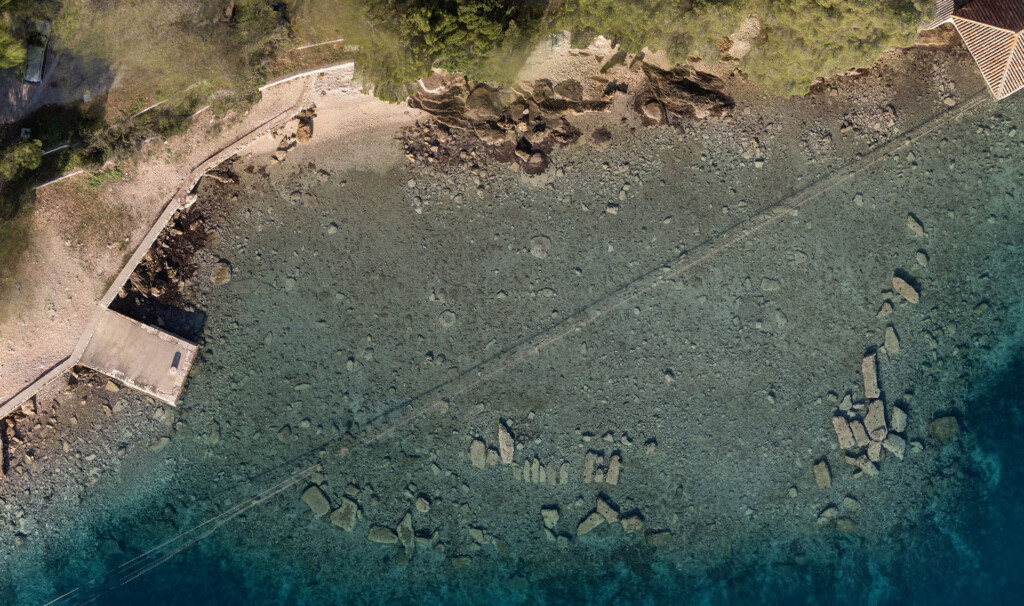
Diving there today, you can see large and small stones left over from ancient buildings, as well as plenty of fragments of ancient pottery that the locals used on a daily basis. After more than 2,000 years, everything is covered with marine organisms and has become home to fish, octopus and other sea creatures. This underwater archaeological site stretches for several hundred meters and is up to 10 meters deep in places. It is quite well documented by underwater archaeologists and underwater photographers. There you can spot such curiosities as those below.
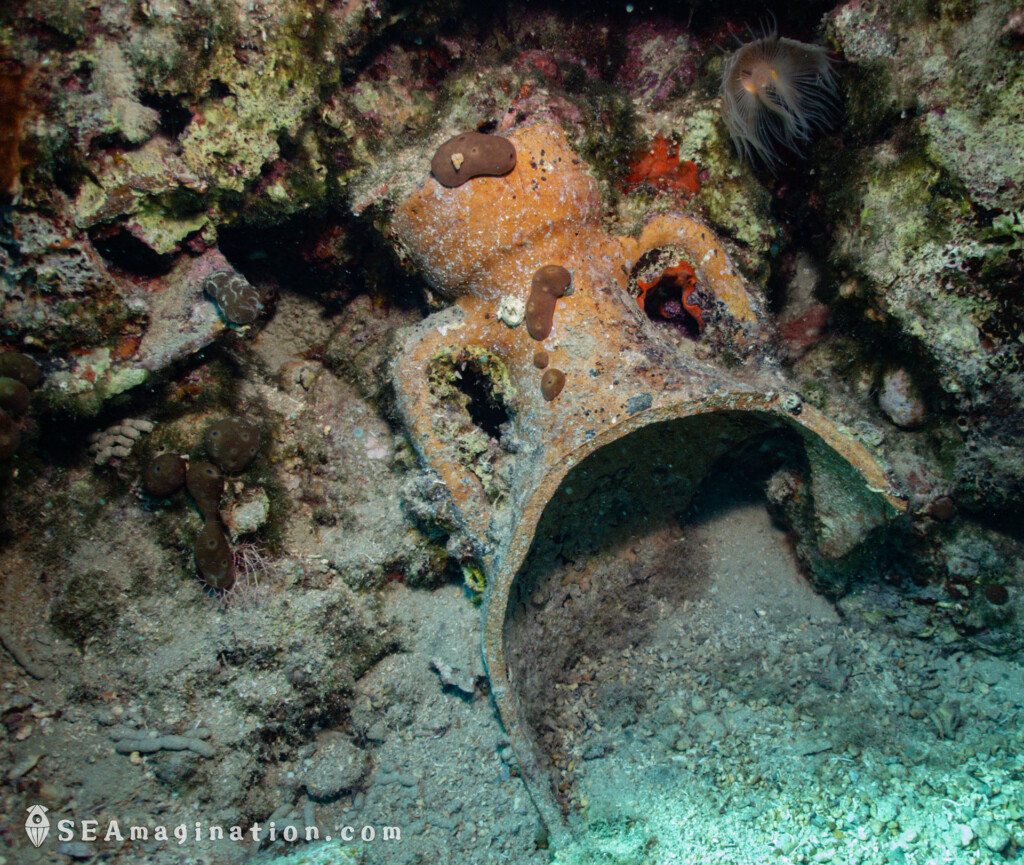
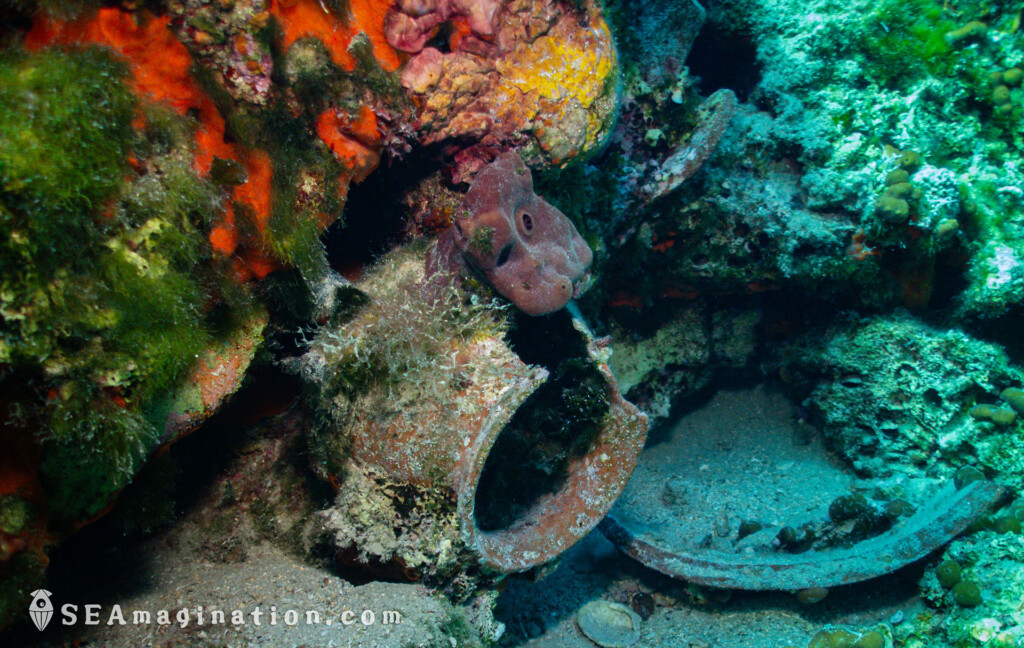
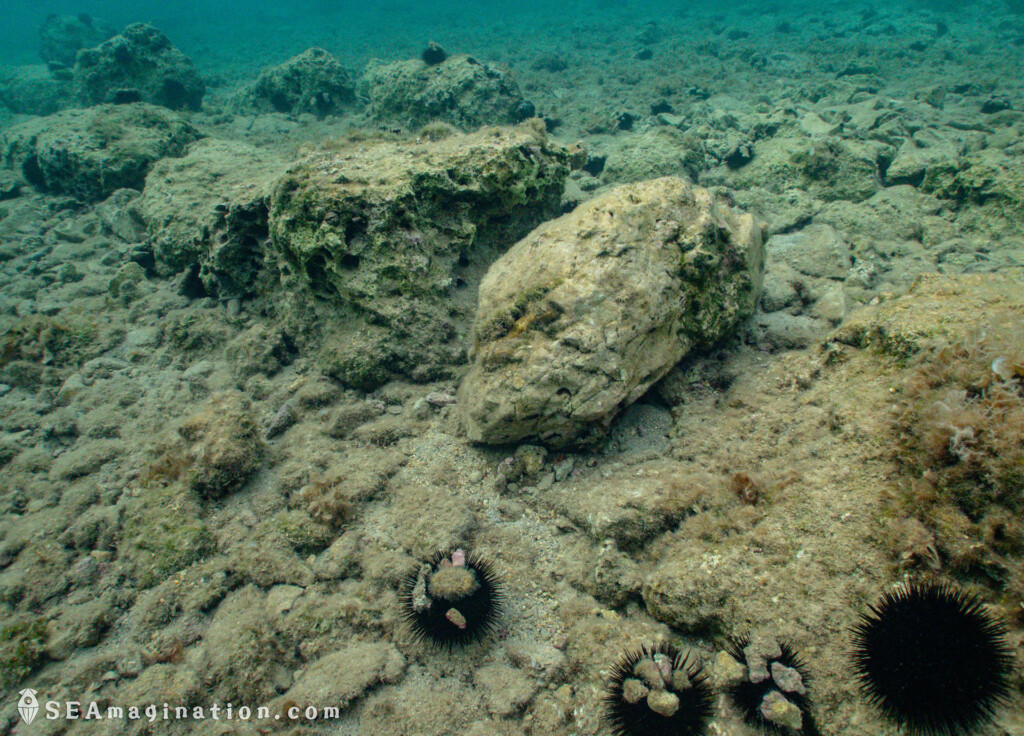
And what is deeper? This is what I have had the opportunity to check many times while conducting dives and courses in the area. In general, there is a lot of sand, a lot of seagrass and huge amounts of rubbish regularly dumped from yachts. But somewhere in between, at a depth of about 20m, I managed to spot such a treasure this year!
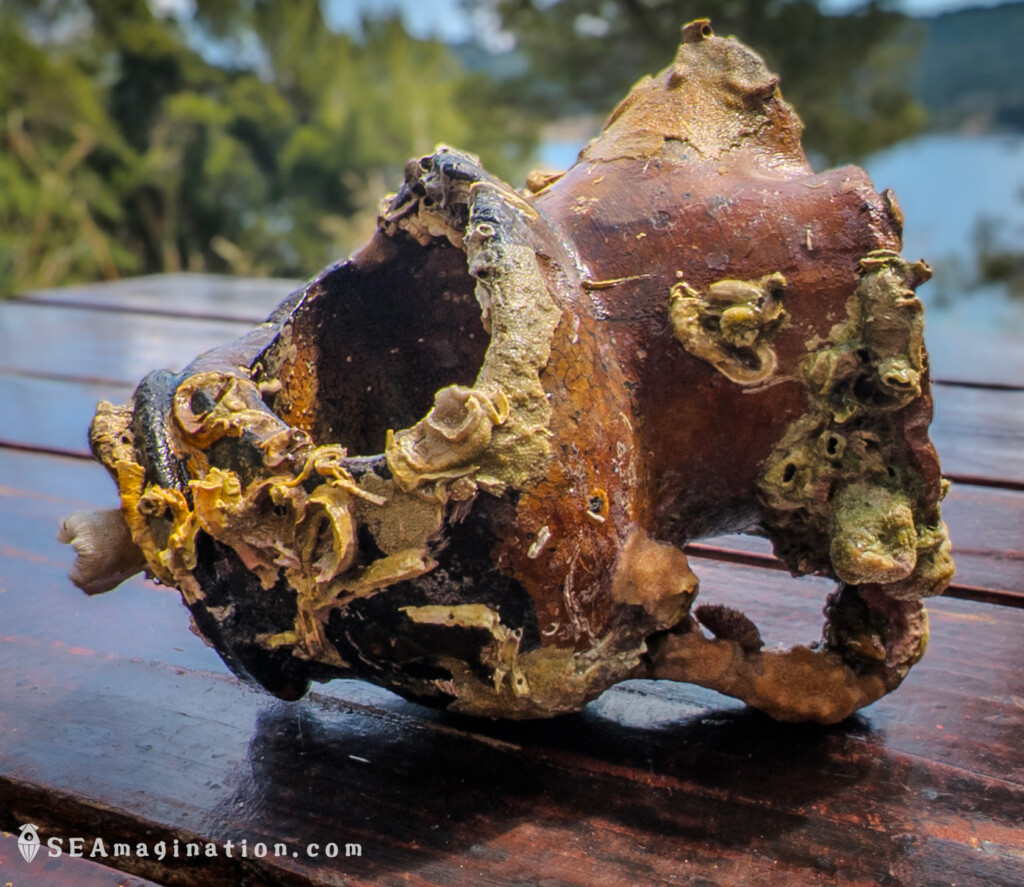
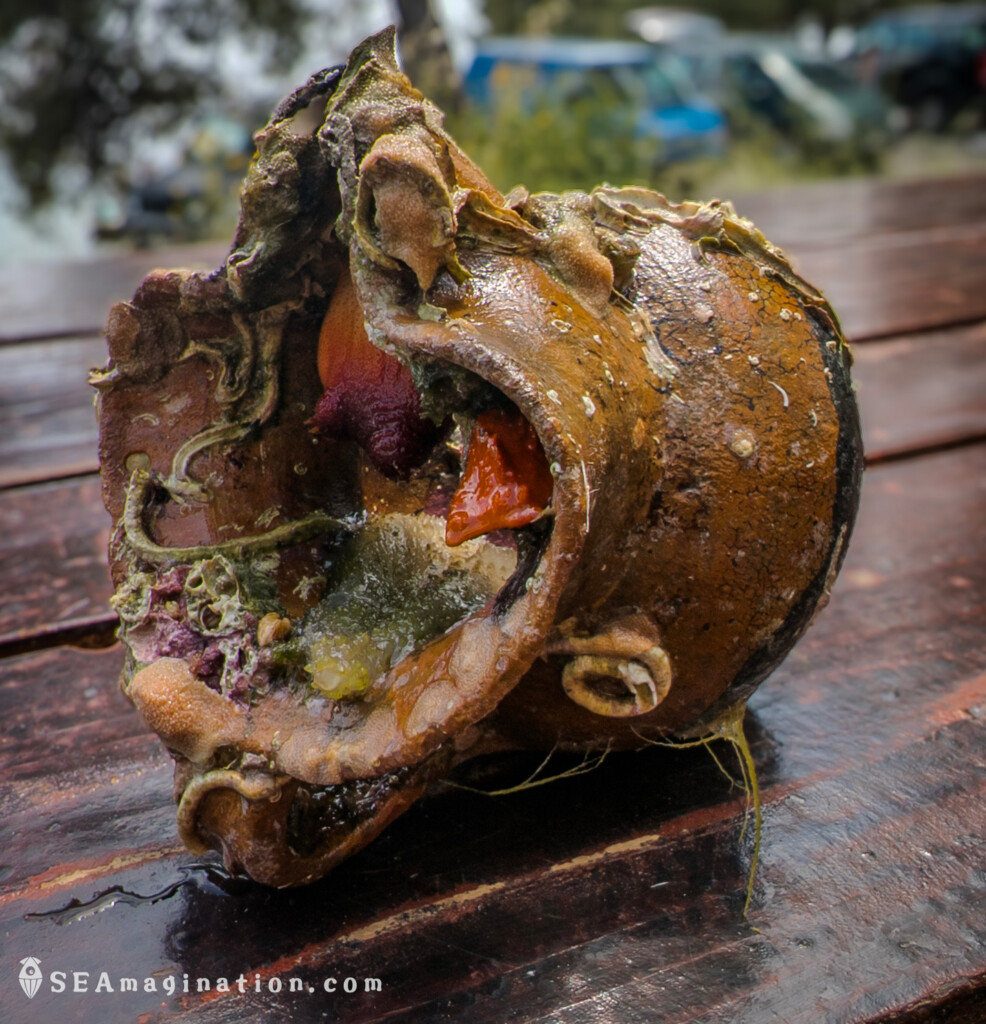
This is a clay jug, slightly damaged, but still in fairly good condition. What era is it from? This is not yet known. Only when it has been desalinated and cleaned it will be possible to determine this clearly. For now, it has been excavated and is in the hands of specialists from the Archaeological Museum in Split. And I am waiting for the results of their expertise.
An artifact found next to the islet fo Host
Host is an islet in front of the port of Vis. Everyone who comes to Vis by ferry notices it, because it is very distinctive due to the lighthouse on it.
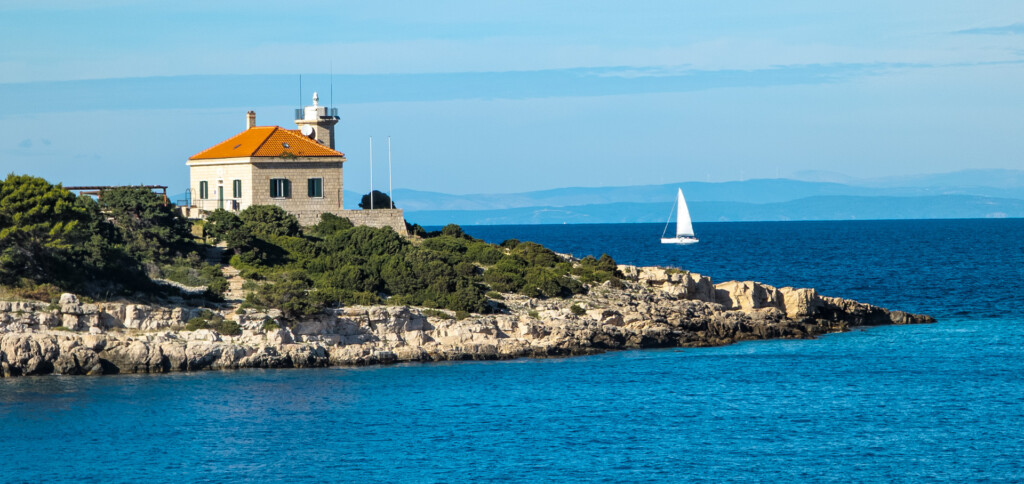
But more than 2,000 years ago, the lighthouse was most likely not there, and an ancient Roman ship carrying amphorae – large clay vessels that were used in those days to carry wine, oil or other liquids – crashed into it. For lovers of underwater archaeology, but also for students of the field, this is, in my opinion, a great place to visit, as it is one of the few ancient shipwrecks open to exploration for recreational divers in Europe.
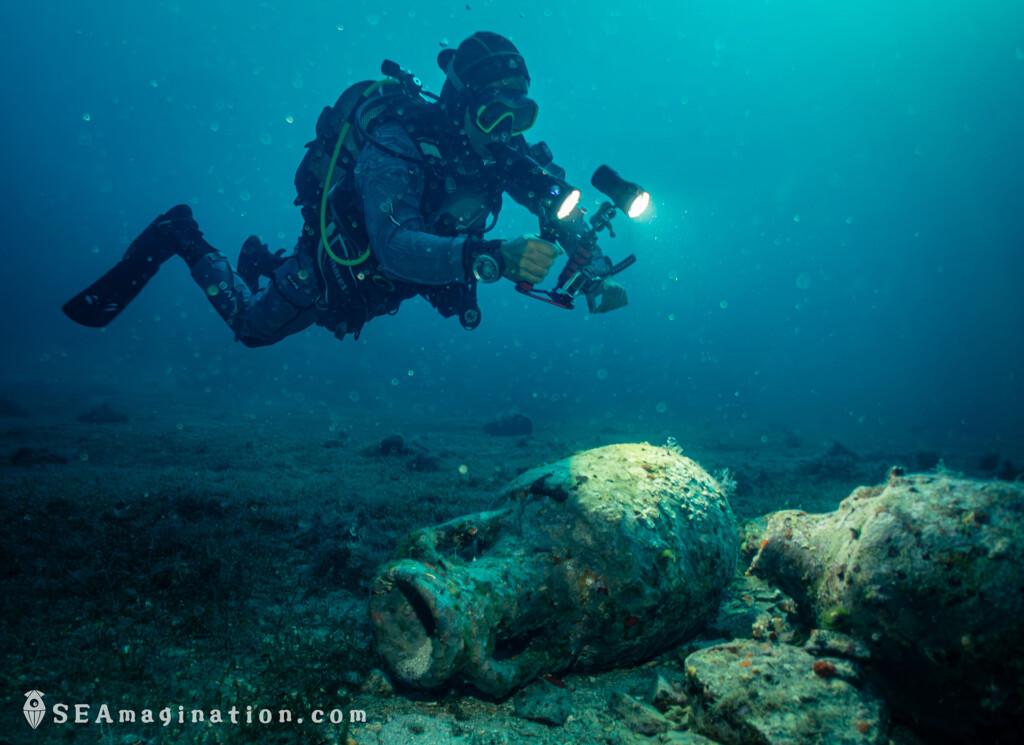
Among the broken amphorae lying on the bottom, often already overgrown by various marine organisms, one can still sometimes spot various small curiosities. For example, fragments of other pottery, much less common than amphorae and giving underwater archaeologists more detailed information about the origin of the ship and crew.
This is what happened this year as well. I found there a piece of clay pot that has decorations in the shape of small leaves.
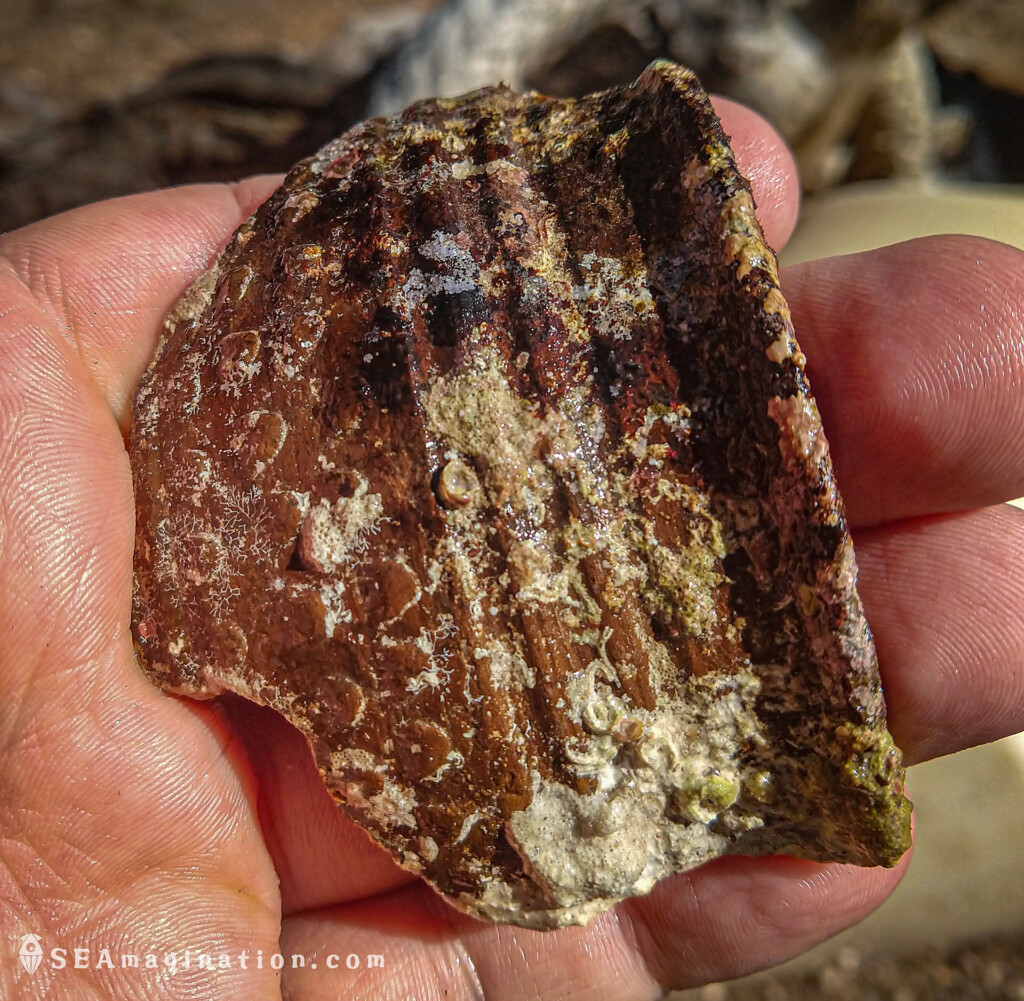
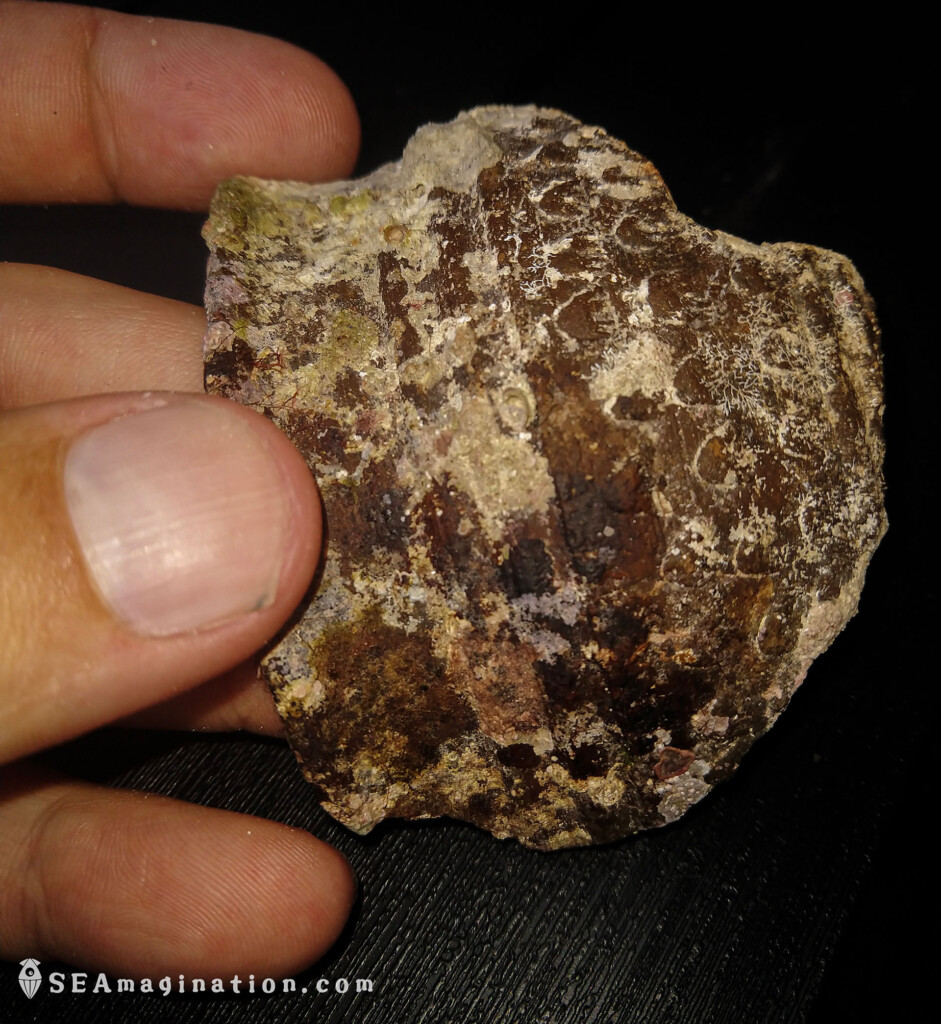
According to Dr. Boris Čargo, an archaeologist at the Archaeological Museum in Vis, these leaves are characteristic of local vessels from Ancient Greek times. So what was the older Greek pottery doing on the newer Roman wreck? Perhaps the item was quite durable and thus long used. Perhaps someone on the crew had a family heirloom with them, or perhaps it was a coincidence. Perhaps someone simply threw a broken vessel overboard in Greek times, just as sailors now throw away cans and bottles, and a few hundred years later an ancient Roman ship crashed in the same place… Well… That’s for archaeologists to determine. The find has been excavated and is now being handled by the Archaeological Museum in Vis.
Artifacts found near the islet of Krava
A few hundred meters next to the islet of Host is the even smaller islet of Krava. In fact, it is just a piece of razor-sharp rock protruding from the sea, and only when the weather is good. During storms the waves can overflow the top and at times completely cover it, which for centuries has posed a deadly threat to the crews of ships sailing there. That’s why a small beacon has now been installed on Krava to warn people to stay away from it. However, as in the case of the islet of Host, there was no lighthouse there in ancient times, and roughly 2,500 years ago an ancient Greek ship crashed there, and a few hundred years later an ancient Roman ship crashed there as well.
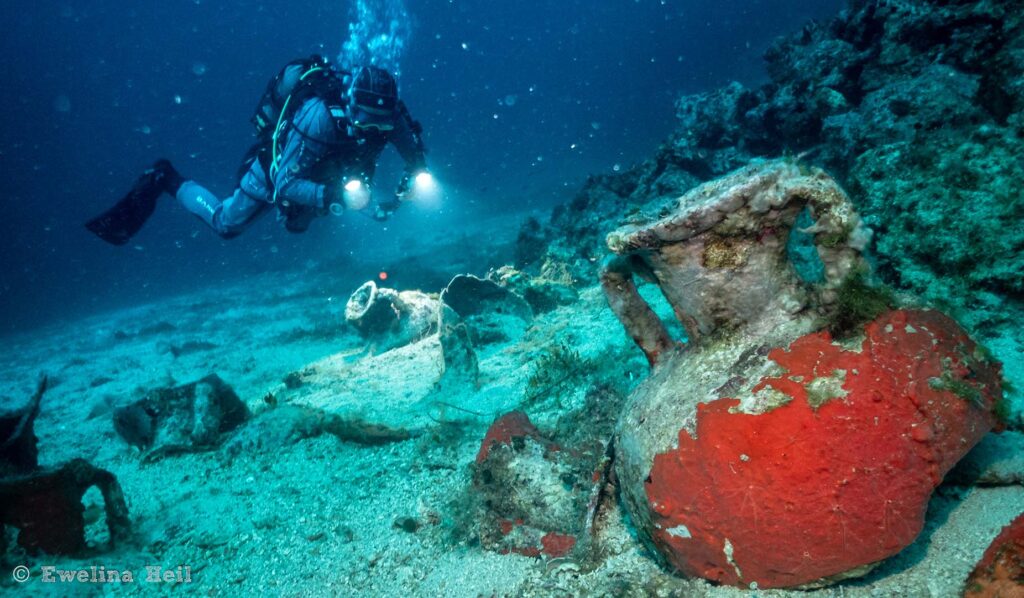
This underwater archaeological site is also open to recreational divers, and I have visited this site regularly as well. In previous years I found there, among other things, an intact ancient Greek jug, and this year I found fragments of ancient Greek pottery.
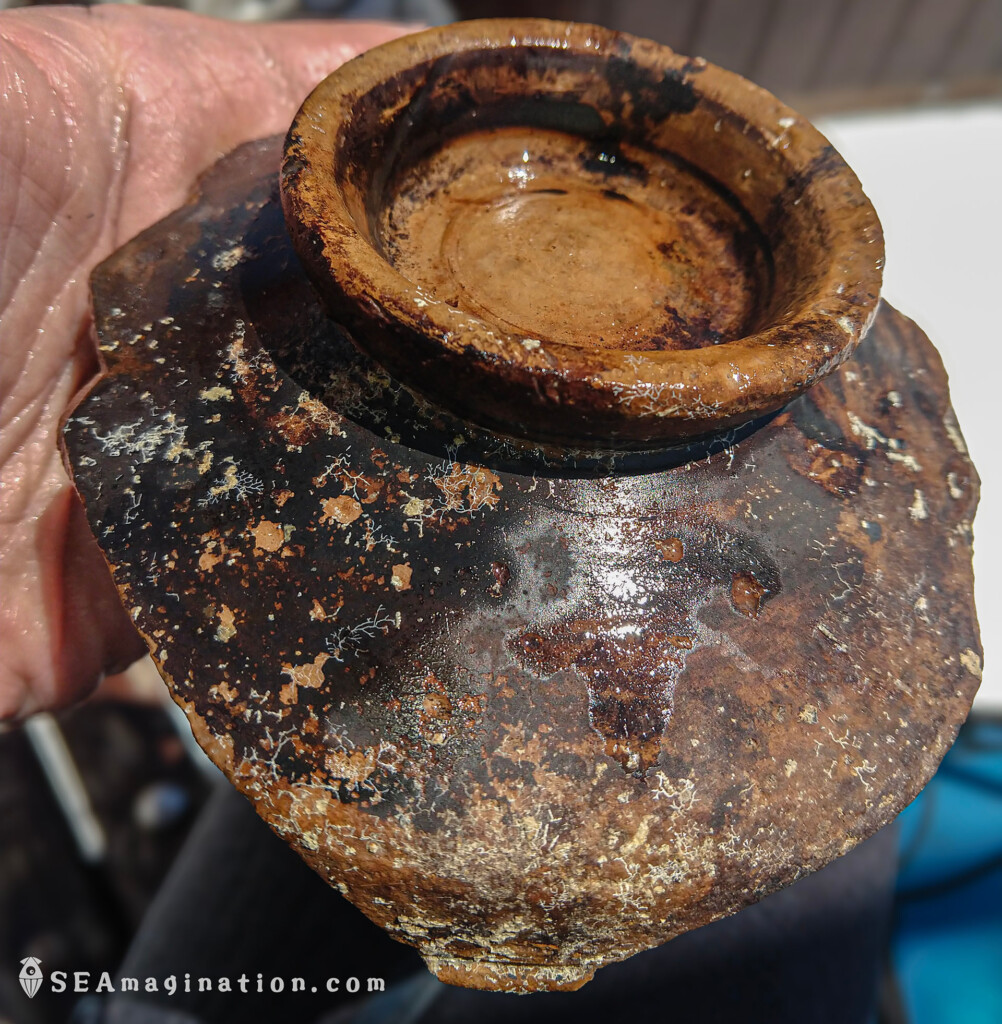
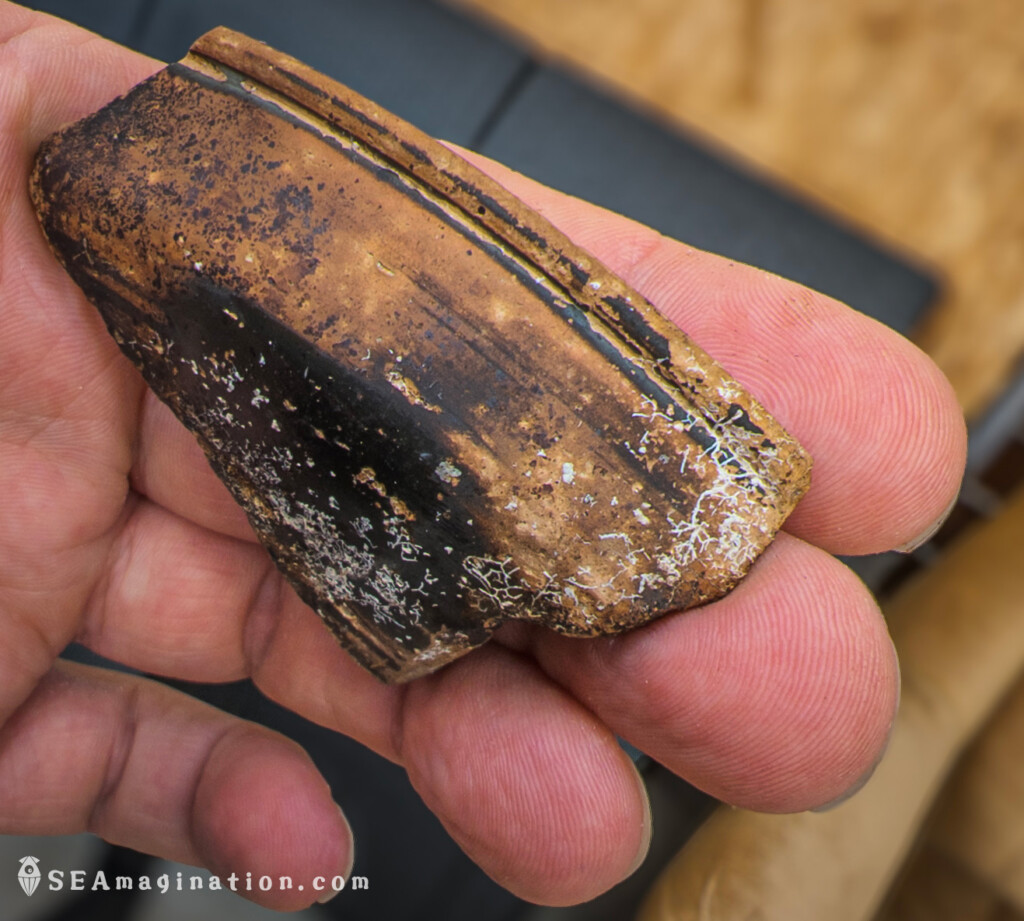
They are interesting to me because they have decorations on the inside, which were first noticed by my fellow diver Artur Łukaszkiewicz who photographed this curiosity for me.
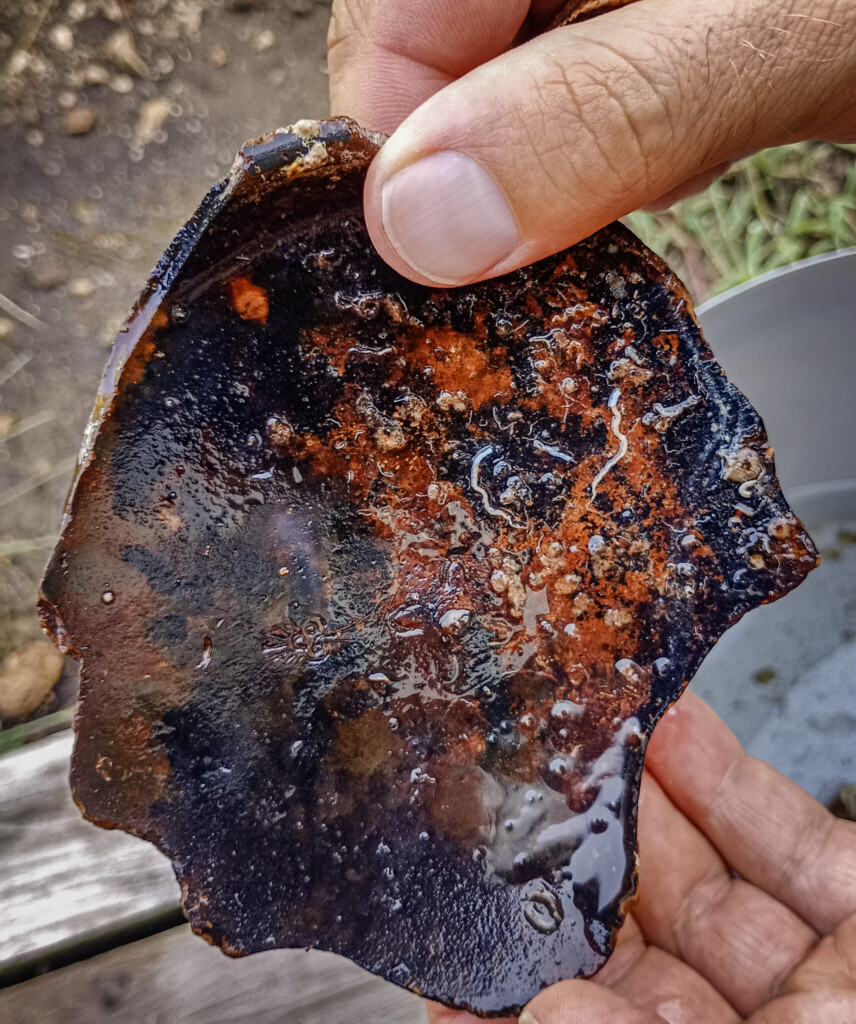
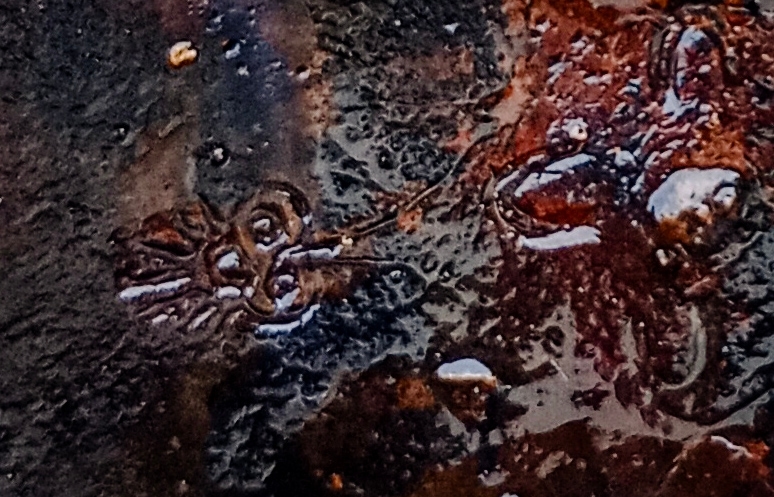
An ancient bone from Krava?
However, at the end of September I made an even more interesting archaeological discovery at Krava. I found what looked like a bone there. By complete coincidence, on this dive I was accompanied by a renowned underwater photographer Filip Mikołajczak, who in his professional life is a doctor, and more specifically, a specialist in orthopedics and traumatology of the musculoskeletal system. He was the first person to help me identify the bone as a human radius.
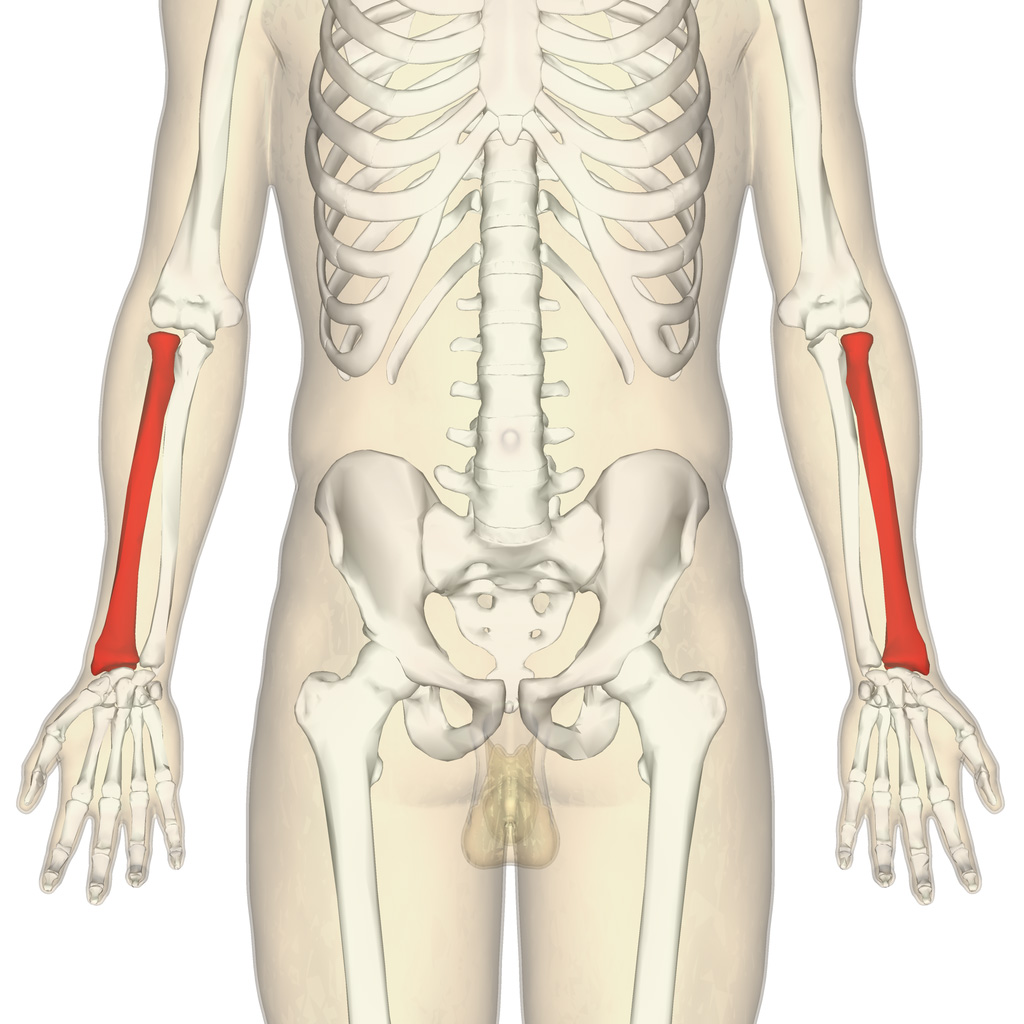
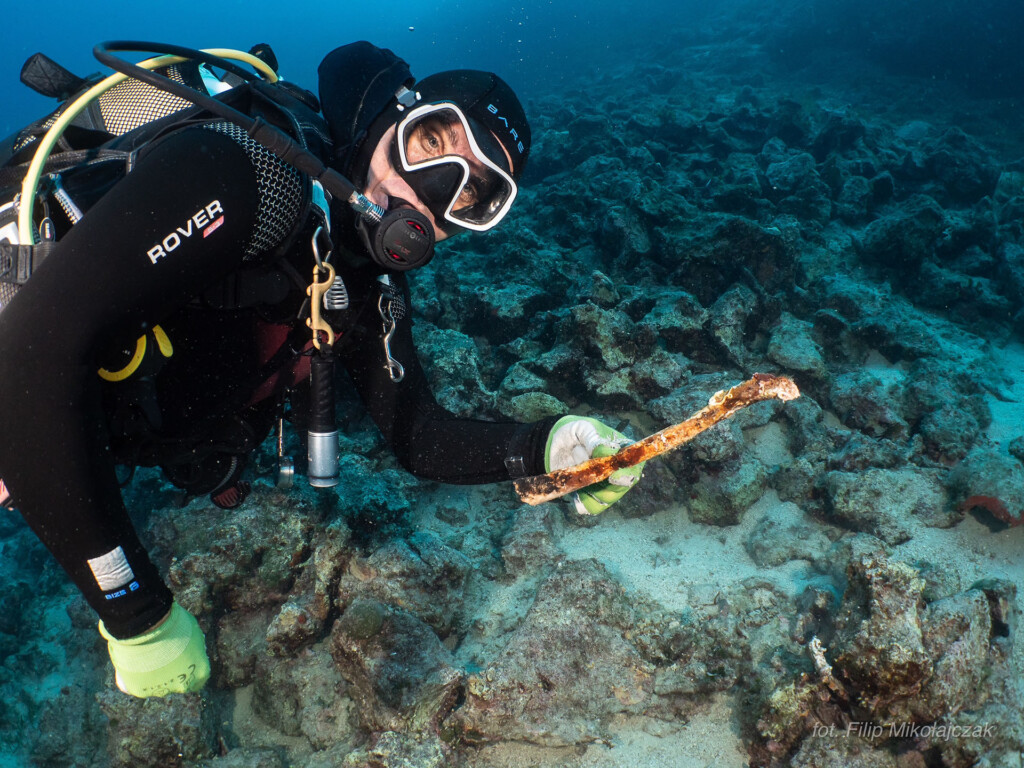
Below is a close-up of the bone from Filip’s photo and a 3D model of the human radius bone. You can rotate it and match the alignment from the photo to make sure it is the radius bone.
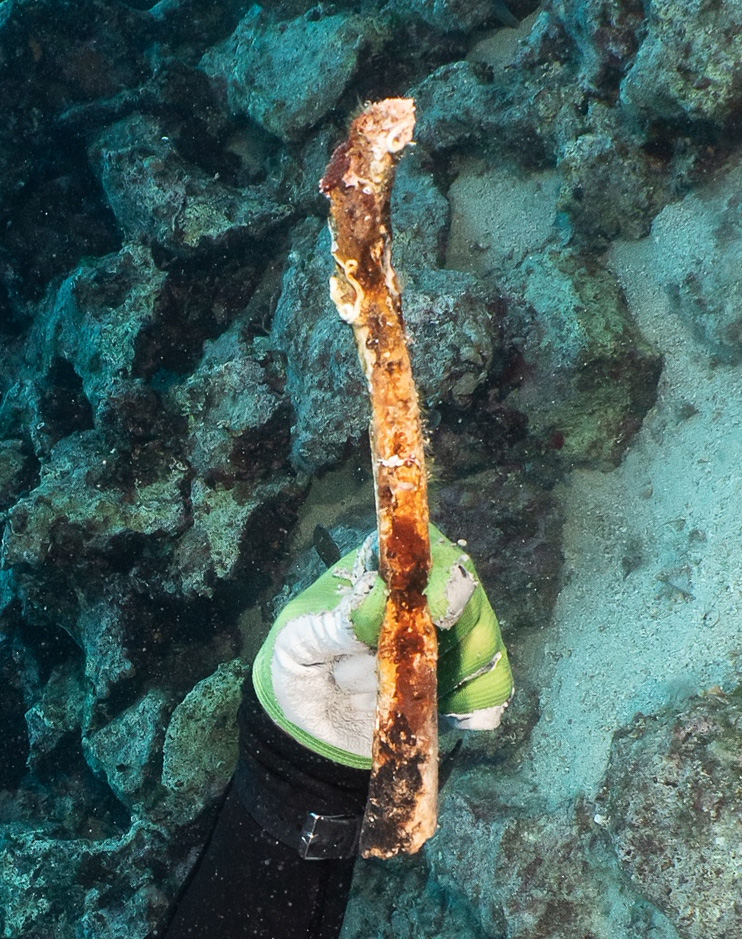
Human radius by Eric Bauer on Sketchfab
How old is the bone from Krava? That is not yet known, but hopefully as old as the wreck. It is currently in the hands of specialists. It was excavated from under the water by underwater archaeologist Tea Katunarić from the University of Split and she will be the one to conduct the research.
Fish in Underwater Archaeology
Some of my discoveries this year would not be possible if it were not for fish, especially a species called red mullet (Mullus barbatus) very popular in the Mediterranean. These fish live near the sandy and muddy bottom and dig there every day in search of food. When they dig into something hard, such as a stone or a piece of ancient pottery, or a bone, and they can’t dig any deeper, they move somewhere else. However, they leave behind a hole in the bottom, and in some cases also an unknowingly made archaeological discovery.
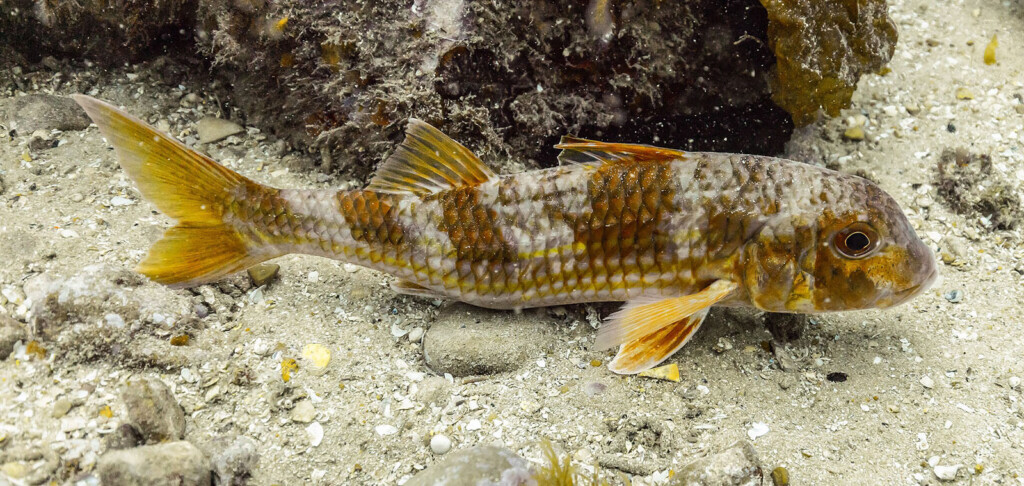
This is exactly what happened on Krava. The remains of the ancient shipwreck are scattered over a relatively small area and there are not many of them. I have been there so many times that I practically know by heart the location of all the larger pieces of amphorae. Sometimes after big storms, with a lot of water movement, a little sand will shift somewhere and uncover something. That’s how, for example, I found another artifact there in the past. But this year, the places where I found artifacts definitely bore the marks of excavations carried out by fish in search of food.
If you like this article, please share it with others. And if you are interested in Underwater Archeology or my previous discoveries, read the article about the treasures I found last year.
Mariusz Milka
Digital Heritage and Underwater Photogrammetry Specialist


